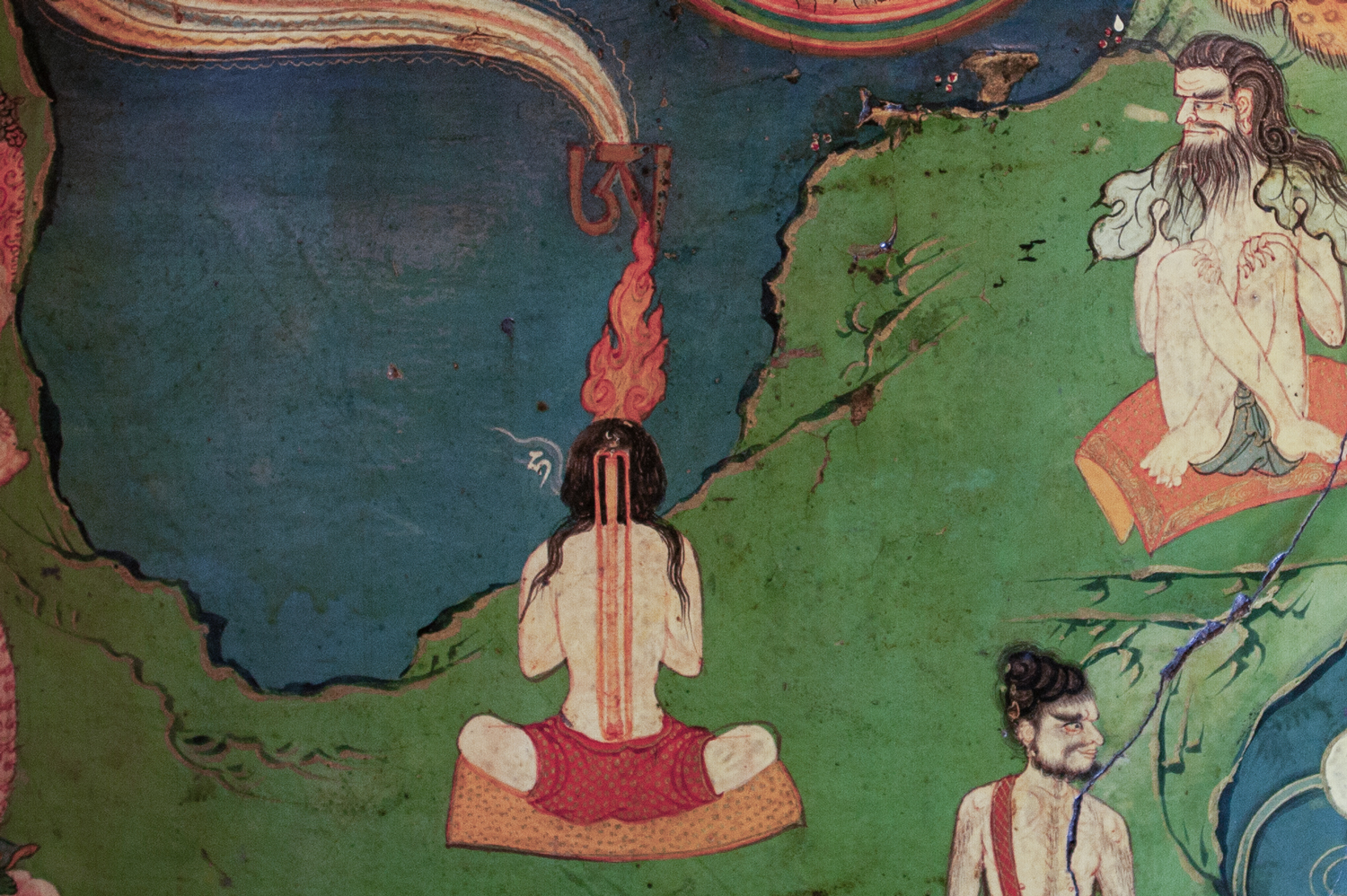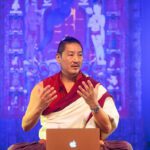Tummo (“fierce inner heat [yoga]) is an advanced tantric practice often taught in conjunction with subtle body movement practices, known as tsalung trulkhor (“winds and channels magical movement”). Tsa refers to the subtle energy pathways through which vital energy (rlung, Tibetan for “wind”) and vital essences (thigle) circulate and connect body and mind. The combination of visualization, breath, and subtle body practices constitute the practice of tummo yoga.
Generating heat through tummo yoga aims to “burn” or digest kleshic energies associated with our conditioned or maladaptive emotional schemas and habitual thought patterns. In order to cultivate an embodied wisdom through tantric practice, one relies on these direct-experience methods to transform body, energy (speech), and mind.
“These disciplines are aimed at transforming the body, vital energy, and mind, making one “come alive,” and, in a way, connect with compassion as an embodied state.“
The principal aim of tummo is to raise inner or yogic heat, giving rise to experiences of wakefulness and bliss. This somatic or bodily joy is used to cultivate awareness and a more distinctly embodied wisdom. The yogic heat transforms the body’s thigle as a somatic basis of blissful, compassionate, and positive affective states, effectively bringing joy on the path.
Tummo can be a source of healing not only for the dedicated Vajrayana Buddhist practitioner but for the wider population. One need not become highly accomplished to reap the benefits of this practice; while progressive stages of tummo practice may be difficult to achieve, positive and substantial results are within reach.
Cultivating Tummo Through Vase Breathing
“Vase” breathing, which draws its name from the Indian yogic method of breath retention, or kumbhaka (Sanskrit), is the foundational breath technique for cultivating tummo. Through inhaling and drawing together the vital winds, which are found below the navel, subtle energy is drawn and stored within the central channel of the body.
The entire network of channels that underlie the structure of the body (described in Tibetan medical and tantric texts) is fortified — made pliable and adaptable — through a combination of movements, massages, strikes, and gestures, along with variations of vase breathing and visualization. One usually begins with a variation of alternate nostril breathing, known as the ninefold purification of the breath. In this method, the body is visualized as crystalline, transparent, and composed of subtle channels (tsa) through which vital energy flows.
Among all channels, three are primary. The central channel and two lateral channels are visualized as having solar and lunar qualities; the right channel is often visualized on the right side — red in color — reflecting qualities of warmth and metabolism. The left side is visualized as a white channel associated with nourishment and even pleasure. The central channel is often visualized with a crystalline blue hue, associated with the transformation of mental states and emotions The side channels are associated with the movement of dualistic concepts, and also store our somatize afflictive emotions and elemental energies. Alternate nostril breathing aims to clear stagnant emotional energies, bodily humors, and mental toxins through the visualization of a hazy smoke exiting as we exhale from nostril to nostril.
The channel-clearing breaths of vase breathing can be a support for meditation, helping us become emotionally balanced and settle into meditation with greater ease. A regular practice of yogic breathing may decrease the burden of stress, and help us regulate and digest emotional experiences.
One of the instructions for vase breathing involves stabilizing the subtle wind and cultivating vitality through visualization and internal breath retention. This type of breath retention purifies the winds in the side channels and guides them into the central channel giving rise to the “wisdom wind” (yeshe rlung), or full expression of these subtle energies. Experienced practitioners rely upon this capacity to enhance meditative states of clarity.
It is said that when the winds flow through the side channels, conditioned or dualistic experiences arise. When they gather in the central channel, this functions as the basis for non-conceptual wisdom. As meditators, we can train to gain facility with the subtle winds to give rise to contemplative states, rather than merely observing the breath or using it as an object of concentration.
Tummo & Visualization
Research on tantric visualization practices suggests that Vajrayana meditation may involve elements of activation and arousal (cortical excitability), which may contribute to core body temperature increase, but also result in neurocognitive effects such as increased attention. The purpose of visualization in tummo yoga is to help us cultivate a more resilient mind and energy, adaptive to a spectrum of embodied states — including joyful, ecstatic, or blissful ones.
The benefits of tummo, Tibetan yoga movement, and breath practices go beyond mindfulness and interoception. Traditionally, these disciplines are aimed at transforming the body, vital energy, and mind through the refinement of the winds (bindu) and vital essences (thigle). They make one “come alive,” and, in a way, connect with compassion as an embodied state. When the subtle winds are brought into the central channel, the mind’s qualities of unimpeded clarity or luminosity are unveiled. Many longterm Vajrayana practitioners find their practice revitalized or more whole when they incorporate these subtle body methods with their longstanding creation stage visualization practice. These methods bring the insights of emptiness and bodhichitta in their own bodies.
As one begins to generate yogic heat through visualization and breath retention, processes of purification and transformation occur. Difficult and often painful or challenging experiences that arise can be skillfully addressed through practice. The increased heat and circulation can undo blockages in the physical, energetic, and subtle or “vajra body.” The practice of tsalung trulkhor includes movements that initially repair blockages and injuries related to the structure of the channels, as well as the chakras. Through this process, muscles, connective tissues, the elements, and humors are balanced in the physical body. Five primary winds and five branch winds — each spoken of in tantric and medical literature — are also balanced and regulated, giving rise to emotional balance and cognitive clarity and stability. As the winds and vital essences become purified they are also drawn into the central channel, giving rise to progressive meditative experience.
Purification, a feature of these somatic, meditative processes, may give rise to discomfort or distressing experiences, but potentially open up avenues of experience as tummo fire penetrates the chakras (vital centers) in the central channel. This may restore our creativity, lost vitality, and capacity for social engagement, intimacy, and even love.
Tummo practice incorporates visualization, movement and expression as methods for deepening our embodiment of wisdom and compassion. Many Vajrayana practitioners find their practice revitalized or more whole when they incorporate these subtle body methods with their longstanding creation-stage visualization practice. These methods bring the insights of emptiness and bodhichitta into our bodies.

